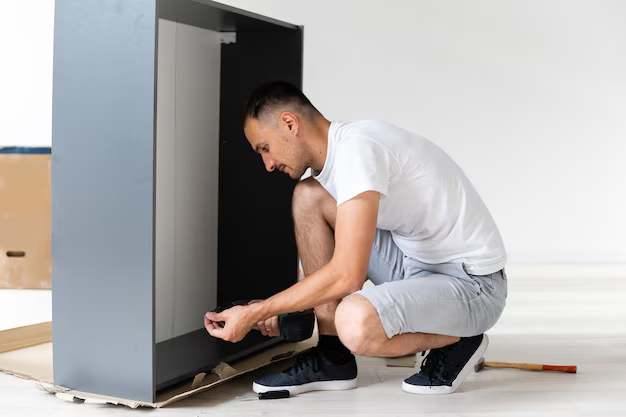Is Your Refrigerator Leaking Water Onto the Floor? Here’s What to Do
A leaking refrigerator is an unexpected household nuisance many face. Imagine waking up in the morning, opening your fridge for breakfast essentials, and discovering a pool of water on your kitchen floor. Not only can this be a slipping hazard, but it could also mean there's something wrong with your beloved appliance. So, what causes refrigerators to leak water, and how can you address it? Let’s explore the reasons and solutions for this common household issue.
Common Causes of a Leaky Refrigerator
Understanding why your refrigerator is leaking water can help you resolve the issue quickly and efficiently. Here are some typical causes:
1. Blocked Defrost Drain
The defrost drain allows water to flow out from the freezer compartment. Over time, food particles or ice can build up, blocking this pathway. This blockage results in water pooling inside the fridge, eventually leaking out.
Fix:
- Use a turkey baster to flush it with hot water.
- If the blockage remains, manually remove ice or debris by gently using a pipe cleaner.
2. Faulty Water Supply Line
A refrigerator with a water dispenser or an ice maker is connected to your plumbing via a supply line. If this line becomes loose or cracked, water may leak.
Fix:
- Inspect the supply line for visible damage.
- Tighten any loose connections or replace damaged lines immediately.
3. Improper Leveling
If your fridge isn't level, the doors may not seal correctly, leading to excess moisture inside and causing water to pool.
Fix:
- Adjust the feet or wheels of your refrigerator to ensure it's level.
- Ensure the front of the fridge is slightly elevated to assist door closure.
4. Clogged or Frozen Water Filter
Over time, a water filter can get clogged, preventing water flow and causing leakage inside the fridge.
Fix:
- Replace the water filter as per the refrigerator’s guidelines, typically every six months.
- Consider upgrading to an external filter for additional debris protection.
5. Damaged Door Seals
Worn-out door seals may cause warm air to enter the fridge, leading to condensation and leakage.
Fix:
- Check the seals for cracks or wear and tear.
- Replace damaged seals to ensure a proper seal around the door.
Troubleshooting Tips 🛠️
Here’s a summary of proactive steps to address a leaky refrigerator:
- Inspect Door Seals: Feel around for cold air escaping and ensure no food or debris is blocking a proper seal.
- Level Your Fridge: Use a leveling tool to check and adjust the fridge's stance.
- Clear Drainage Systems: Regularly check and clean the drainage areas inside the fridge.
- Check Water Connections: For units with water features, verify all connections are secure and undamaged.
Related Concerns: Protecting Your Floors
While fixing the fridge is essential, taking measures to protect your floors is vital to prevent long-term damage:
1. Absorbent Pads or Mats
Consider placing absorbent mats under the refrigerator to soak up accidental spills or leaks.
2. Regular Cleaning and Maintenance
Wipe water spills immediately and conduct regular maintenance to ensure the appliance operates correctly.
When to Call a Professional?
If the problem persists despite your efforts, it may be time to consult a professional repair service. Continued leakage can signify deeper, more complex issues that only a trained technician should address.
Signs That Expert Help Is Needed:
- Persistent leaks despite all attempts to fix common problems.
- Signs of electrical issues, like flickering lights or power disruptions.
- Visible or audible signs of malfunction, such as strange noises or frequent cycling on and off.
Preventative Measures for a Leak-Free Refrigerator
To keep your refrigerator in peak condition and avoid future leaks:
1. Regular Maintenance Checks
Schedule routine inspections of your appliance to catch potential issues early.
2. Routine Cleaning
Ensure both the inside and outside of the fridge are regularly cleaned. This includes checking the drip pan, which can accumulate water over time.
3. Temperature Regulation
Keep your refrigerator at optimal temperatures to avoid excessive ice build-up that can lead to drainage issues.
4. Replace Components Timely
Don’t delay in replacing old or worn-out parts like seals and filters to maintain your fridge’s efficiency.
Visual Summary 📋
Here is a concise guide for easy reference on tackling refrigerator leaks:
| Problem | Solution | Emoji |
|---|---|---|
| Blocked Defrost Drain | Clear with hot water or pipe cleaner | ❄️ |
| Faulty Water Line | Tighten/replace the line | 🚰 |
| Improper Leveling | Adjust fridge feet | 🔧 |
| Clogged Water Filter | Replace the filter regularly | 🚿 |
| Worn-Out Door Seals | Check and replace as needed | 🚪 |
By understanding the causes and solutions for a leaking refrigerator, you can safeguard your kitchen against unexpected water damage and extend the life of your appliance. Remember, while DIY solutions can address many common issues, never hesitate to seek professional help if problems persist. Proper maintenance and timely repairs ensure your refrigerator continues to serve you well for years to come.
